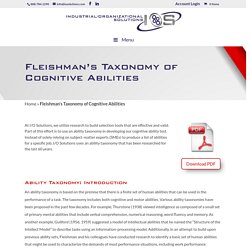

Topic 5: Skill in Sport - IB. Physical Educ8or: IB SEHS: Classification of Skill. Physical Educ8or: IB SEHS: Skill: Information Processing. Physical Educ8or: IB SEHS: Skill: Principles of Skill Learning. SEHS Topic 5 (Youtube playlist) Skill, Technique and ability. A question often asked is what is the difference between skill, technique and ability?

What is a skill? Skill is an athlete's ability to choose and perform the right techniques at the right time, successfully, regularly and with a minimum of effort. Athletes use their skill to achieve athletic objectives e.g. sprinting a 10.0 second 100 metres. Skill is acquired and therefore has to be learned. Skill Classification - Continuums. There is a broad range of sporting activities, each requiring a set of skills.

Skills have many characteristics that can change in different situations, which makes classifying them difficult. Accepting that skills cannot be neatly labelled, we place them on a continuum. Classification of Motor Skills: Skill Acquisition (Fine/Gross..Serial..) Motor Learning and Development: Distinction Between Skill and Ability. Factors Affecting Abilities An individual’s abilities are shaped by biological and physiological factors (Fleishman, 1964).

The composition of an individual’s muscular tissue is certainly going to affect his physical proficiency motor abilities such as strength, endurance, and flexibility. Physiological deficits in the development of rods and cones would also limit an individual’s perceptual–motor abilities, potentially affecting reaction time. Abilities are also affected by environmental factors. For example, children who are afforded formal education will continue to develop their verbal and reasoning abilities throughout their academic years, just as children who participate in physical fitness- or sport-related programs will develop their motor abilities. Cognitive Ability Test. Uses of Human Abilities Taxonomy A set taxonomy of human abilities is preferable to developing a unique set of ability labels in job analysis.

Often, ability labels developed in the context of a job-analysis project are ill-defined and confusing to SMEs who must evaluate their importance. Typically, a group of SMEs will be asked to provide labels for the knowledge, skills and abilities necessary to complete certain tasks. Since these SMEs are unfamiliar with the concept of abilities and have little appreciation for which abilities have been isolated by research, they tend to choose labels that are long-winded or that vary widely in specificity, redundancy and definition.
As an example of a common mistake, an SME considering the task of breaking down a door might state that this behavior (breaking down a door) requires “door-breaking ability,” or perhaps “the knowledge of where and how to break down a door.” Alternate Hand Wall Toss Test. Stick Flip Coordination Test. Home > Fitness Testing > Tests > Coordination > Stick Flip The stick flip test is a coordination and general motor skill test.

Participants attempt to flip a stick using two other sticks. purpose: to measure hand-eye coordination and dexterity. equipment required: three sticks are required for each person being assessed. Each stick should be about 60 centimeters (~2 foot) long, two centimeters (~1 inch) in diameter and with tape or painted at one end. procedure: there are two parts to this test, one with five attempts at a half flip, the other with five attempts at a full flip. Learn to JUGGLE 3 BALLS - Beginner Tutorial. Transfer of Skills. Welford'sModel. Information processing model: Sensory, working, and long term memory.
Signal detection theory - part 1. Theories of Selective Attention. Selective Attention Test. Memory, Reaction Time and Hick's Law. AS PE: Psychological Refractory Period. Psychological refractory period. Memory Test : How Good is Your Memory? A 2-Minute Test. Introduction to Psychology. Memory-Enhancing Strategies What are some everyday ways we can improve our memory, including recall? To help make sure information goes from short-term memory to long-term memory, you can use memory-enhancing strategies. One strategy is rehearsal, or the conscious repetition of information to be remembered (Craik & Watkins, 1973). Think about how you learned your multiplication tables as a child. You may recall that 6 x 6 = 36, 6 x 7 = 42, and 6 x 8 = 48.
Another strategy is chunking: you organize information into manageable bits or chunks (Bodie, Powers, & Fitch-Hauser, 2006). Link to Learning Try this fun activity that employs a memory-enhancing strategy. You could also enhance memory by using elaborative rehearsal: a technique in which you think about the meaning of the new information and its relation to knowledge already stored in your memory (Tigner, 1999). Mnemonic devices are memory aids that help us organize information for encoding (Figure 1).
Figure 1. Motor Learning and Development 2nd Edition - Haibach, Pamela, Reid, Greg, Collier, Douglas. Techniques to Enhance Learning and Memory. Adam's Open Loop Theory - part 1. Adam's Closed Loop Theory - part 2. (5) 2-Minute Neuroscience: Vestibular System. Reflex vs Reaction. Reflex Test - Check your Reaction Speed. Joshua Foer: Feats of memory anyone can do. 5.3 – Principles of Skill Learning. 5.3.7 - Types of Practice. (5) WORLD'S BEST Gymnast Simone Biles. (5) Max WHITLOCK GOLD Floor 2016 Men's Senior British All-Around.